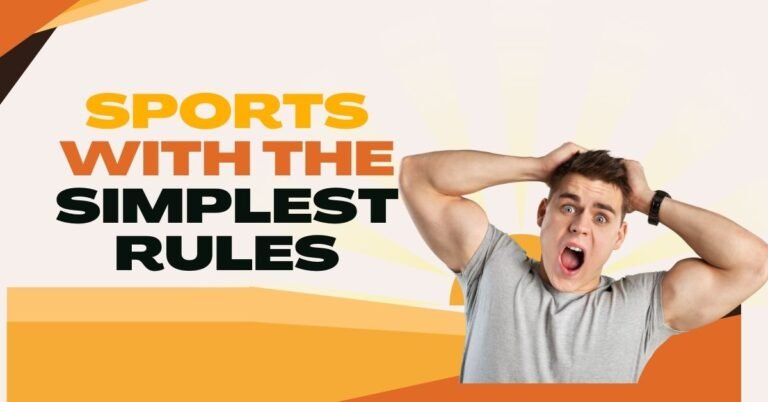Adaptive sports provide inspiring opportunities for those with disabilities to participate in athletic pursuits. Also referred to as parasports, they open up the profound benefits of sports – competition, community, and improved health. Adaptive sports foster empowerment and change perceptions.
Overview of Adaptive Sports
Adaptive sports are recreational or competitive athletic activities specifically adapted to accommodate individuals with disabilities. Modifications may include:
- Use of assistive devices like prosthetics or wheelchairs
- Rules adjustments to reduce barriers
- Classification of participants by disability type or severity
- Events designed for specific impairment categories
- Special coaching and training techniques
Almost any mainstream sport can be adapted to expand accessibility.
Benefits of Adaptive Sports and Recreation
Participating in adaptive sports delivers immense benefits, both physical and mental:
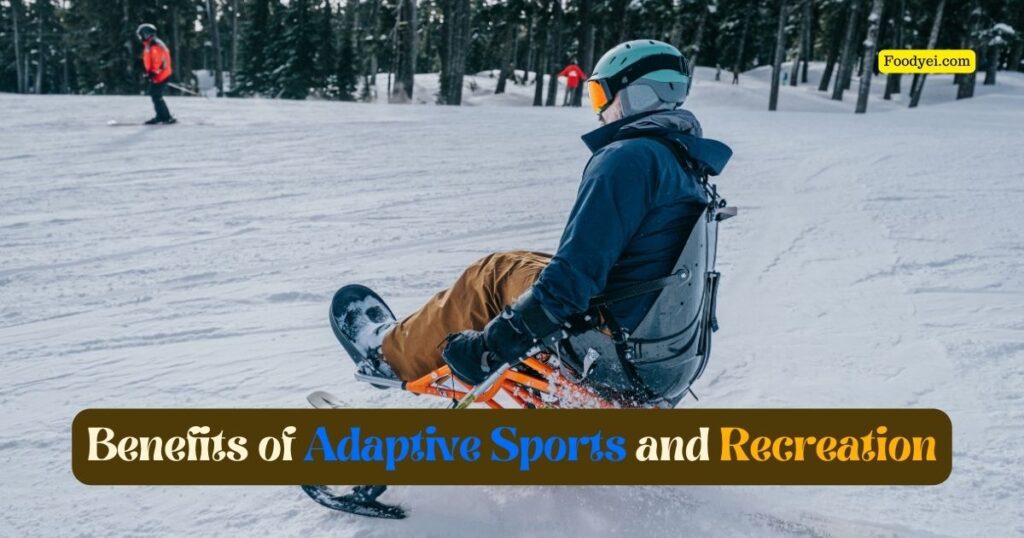
- Build strength, coordination, flexibility, balance, and fine motor skills
- Prevent secondary health issues like obesity, diabetes, and depression
- Promote independence through developing capabilities
- Foster social connections and support communities
- Boosts self-confidence and emotional wellbeing
- Provide a sense of belonging and identity
- Deliver opportunities for achievement and fulfillment
- Increase visibility and inspire others with disabilities
The benefits of adaptive sports span from youth through adulthood.
Adaptive Sports for Vision Impairments
Sports for the blind and visually impaired use sound and touch to enable participation. Examples include:
Goalball
Players wear blindfolds and defend a goal by listening for bells inside a ball rolled by opponents and blocking it. No sight is required.
Beep Baseball
Batters listen for beeps from the ball they hit off a tee while fielders retrieve the ball and yell contact to stop runners.
Blind Soccer
Players follow a ball with bells inside it and are directed by coaches. Only the goalie can fully see.
Blind Golf
Visually impaired golfers often have sighted coaches and may use braille-marked clubs and balls with beepers.
Adapted equipment and enhanced audio cues open sports to those with vision loss.
Wheelchair Basketball

One of the most popular wheelchair sports, basketball retains standard rules but athletes compete in sport wheelchairs designed for mobility, pivoting, and stability. Chairs have angled wheels, a lower center of gravity, and guards around wheels for safety.
Wheelchair basketball first emerged after WWII to aid rehabilitation and is now a Paralympic event. It requires players to develop skills like ball handling, passing, shooting, and defensive positioning from a seated position.
Sled Hockey
Sled hockey allows players to propel themselves across the ice through adapted sleds with metal runners that slide smoothly. Players use shortened hockey sticks with metal picks on one end to maneuver a puck and shoot.
First played in Sweden in the 1960s, sled hockey consists of fast-paced 3 on 3 competition. The sport made its Paralympic debut in 1994 and has grown worldwide since, providing an exciting outlet for ice hockey fans and athletes with mobility limitations.
Adaptive Skiing
Through instruction, specialized equipment like sit-skis, outriggers, and other aids, people with mobility, vision, and cognitive impairments can safely enjoy skiing. Adaptive skiing encompasses downhill skiing, cross-country skiing, snowboarding, and snowshoeing.
With adaptive certifications and training for instructors, adaptive skiing empowers those with disabilities to experience the speed and scenery of the slopes based on their individual abilities.
Swimming
To enable competitive swimming, Paralympic swimming events group athletes based on the type and extent of their disability. For example, the S10, SB9, and SM10 classes compete against peers with similar mobility. Stroke variations, starts, and technical rules are adjusted accordingly.
Swimming provides an adaptable, non-impact form of exercise regardless of impairment type, making it widely accessible. Patients embracing aquatic therapy are empowered to pursue competitive swimming if desired.
Adaptive Cycling
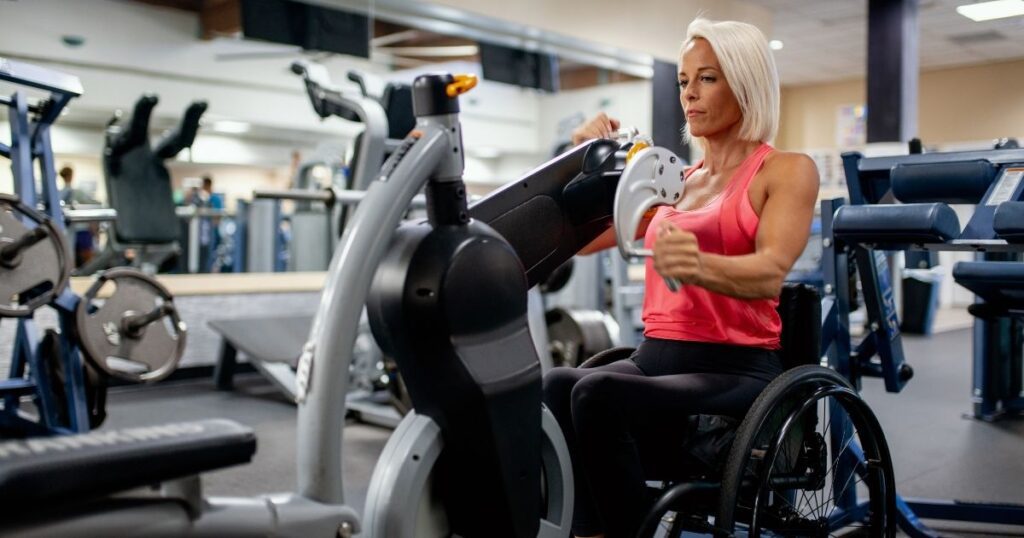
Cycling presents a low-impact transportation and recreation option for many individuals with disabilities. Adaptive cycles accommodate a wide range of needs:
- Recumbents – Seated reclined position with front-wheel drive
- Tandem – Riding with a pilot who steers in front
- Handcycles – Three-wheeled arm-powered cycles
- Tricycles – Three-wheeled cycles with spacious seating
- Adaptive motorcycles – Customizable with hand controls
Specialized bikes restore freedom of movement and recreation through cycling. Adaptive lessons teach road safety for daily living.
Amputee Sports
Following amputation, sports participation plays a critical role in recovery both physically and psychologically. Popular amputee sports include:
- Track – Running events with prosthetic legs
- Swimming – With modified strokes and turns
- Basketball – Played in wheelchairs at high competitive levels
- Volleyball – Sitting indoors or standing with minimal mods
- Climbing – Ascending with prosthetic limbs
- Skiing – Using outriggers and other adaptive equipment
World records continue to be pushed as prosthetic limbs evolve. Amputee sports provide motivation during rehabilitation.
Deaf & Hard of Hearing Sports
Deaf sports are fully integrated into both the Deaflympics and Paralympics. Hearing impairments do not impact sports performance. Popular adapted deaf sports include:
- Football
- Basketball
- Volleyball
- Tennis
- Wrestling
- Bowling
- Golf
Visual cues adapt communication. Deaf athletes hone their focus and reaction time to exceed even hearing competitors.
Special Olympics
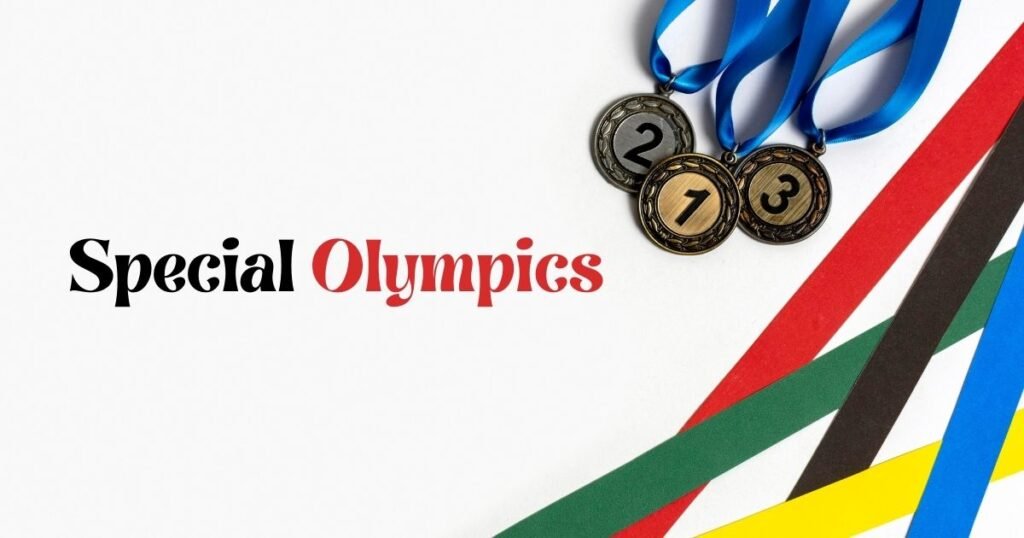
The global Special Olympics organization serves athletes with intellectual disabilities through sports training and competition. Contested Special Olympics sports include:
- Athletics (Track & Field)
- Gymnastics
- Swimming
- Golf
- Floor Hockey
- Tennis
- Badminton
- Sailing
- Snowboarding
Special Olympics builds athletes’ confidence and capabilities. Events add unified competition joining those with and without intellectual disabilities.
PTSD & Disabled Veterans Sports
Sports therapy positively impacts disabled veterans and those managing PTSD by reducing stress, building camaraderie, and by providing purpose. Popular adaptive sports for wounded warriors include:
- Wheelchair Basketball
- Sled Hockey
- Cycling & Handcycling
- Rowing
- Golf & Disc Golf
- Equine therapy
- Running & Triathlon
- Swimming
- Archery
Disabled veteran sports encourage resilience, well-being, and fellowship.
Adaptive Sports for Youth
Introducing adaptive sports at a young age fosters social development, self-esteem, and lifelong fitness habits. Kids enjoy playing classics like:
- Wheelchair basketball
- Goalball
- Beep Baseball
- Sled Hockey
- Swimming
- Adaptive Cycling
Exposure develops motor skills and strengths while allowing kids to simply have fun peer-to-peer.
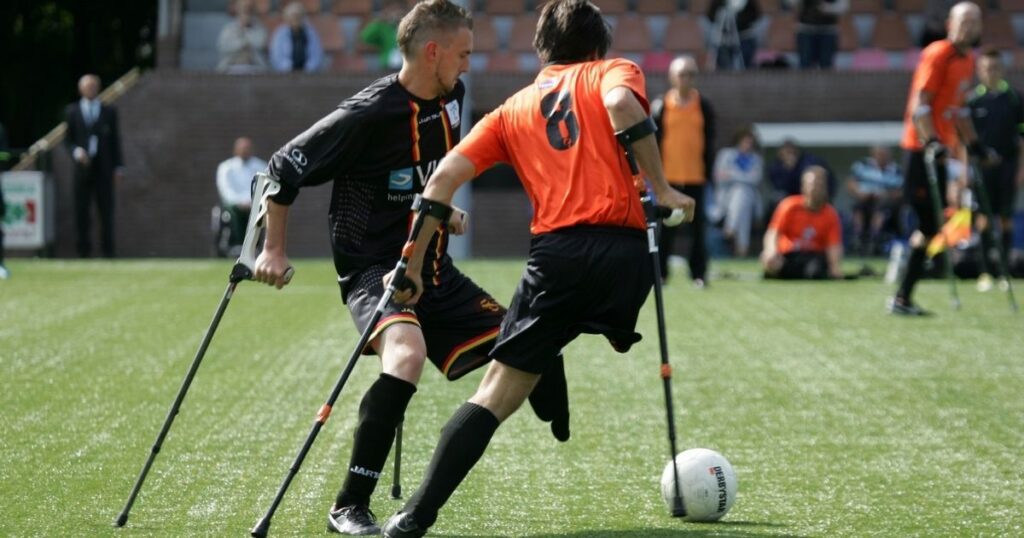
Resources for Finding Adaptive Sports Programs
Individuals with disabilities have growing opportunities to get involved in sports nationwide. Helpful resources include:
- Local Parks & Recreation Departments
- Hospitals & Rehabilitation Centers
- Veterans Groups
- Paralysis Resource Centers
- State Assistive Technology Act Programs
- National Disability Sports Organizations
- Lakeshore Foundation & Other Sports Camps
- Team USA Paralympic Pipeline
Conclusion
Adaptive sports empower individuals with disabilities by building capabilities and confidence through athletic participation. Sports rehab also aids the recovery journey. While work remains to expand inclusion, exciting progress enables more Para athletes to compete while inspiring others. As awareness and participation in adaptive sports grows, they will transform perceptions, push limits, and fulfill more potential.
FAQs
How are adaptive sports working to end the stigma around disabilities?
Showcasing disabilities on the public stage shifts perceptions. Celebrating athletic accomplishments overshadows limitations. Increased visibility promotes an understanding of disability realities, capabilities, and diversity.
What does the path look like to potentially reach the Paralympic/Deaflympic level?
It starts locally with training, youth teams, and regional tournaments. Progressing to nationals and player pools connects athletes to coaches and resources. Developing over the years gains competitive rankings required for international elite levels.
How can I volunteer with adaptive sports programs in my community?
Contact local teams, leagues, rec centers, rehab facilities, and nonprofits about needs – coaches, referees, administrators, translators, or general volunteers to support programs. Any involvement makes an impact.
What is the difference between the Paralympics and Special Olympics?
The Paralympics features world-class elite athletes with physical disabilities. The Special Olympics provides sports training and competition for those with intellectual disabilities on a more grassroots level.
How can technology further adaptation and accessibility of sports for people with disabilities?
Innovations in prosthetics, exoskeletons, VR training, mobility equipment, and assistive devices continue to expand possibilities. Progress expands the realm of adaptive sports.
What does the future outlook for growth and inclusion in adaptive sports look like?
With more participation opportunities, inclusion efforts, and visibility, the future is bright. Acceptance and excitement around Para sports will spread. Greater accessibility in schools, communities, and recreational facilities will further progress.




